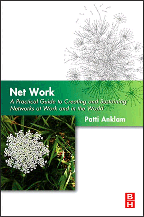Teaching Net Work in Executive Ed
One of our SNA JumpStart telecalls spotlighted Kate Ehrlich (IBM) and Don Ronchi, formerly of Raytheon and now with the University of Chicago. Working with Ron Burt, Don developed and managed a Business Leadership Program (BLP) at Raytheon. The goal was to introduce senior managers to the network theory of social capital, its implications in a business environment, and provide a practicum in which managers could apply theory and methods in their work. Their paper describing the program and its outcomes is called Teaching Executives to See Social Capital: Results from a Field Experiment.
We network canaries have been peeping about the need for managers to be trained to understand and leverage networks, and I’m thrilled to see both the amazing course (materials are available on Ron Burt’s teaching and research pages.
The course includes many case studies, which will take me weeks to devour. But you should devour this: the result of their analysis of the BLP itself is a riveting read (I quote from their summary):
executives educated in the network structure of social capital show performance improvement relative to a control group of untrained, but otherwise equally able peers: Program graduates are 36% to 42% more likely to receive top performance evaluations, 43% to 72% more likely to be promoted (an effect that builds in the two years following the program), and 42% to 74% more likely to be retained by the Company. Active participation matters. The subsequent careers of executives who were quiet spectators in the program cannot be distinguished from the careers of people in the control group, peers who never attended the program.
This session prompted me to go back and pick up Brokerage and Closure, which I had begun some time earlier, and fallen off a bit.
My newest learning from both the session and the book is the concept of the network constraint, and that is a concentration measure tha varies from 0 to 100 as a persons’ time and energy become concentrated in a single contact. So, the more time you spend with a small, closed group, the higher the constraint. Burt uses two symbols to illustrate constraint ranging from 0 to 100.
(I have to go figure out how to make the little graphic work. Back later.)




